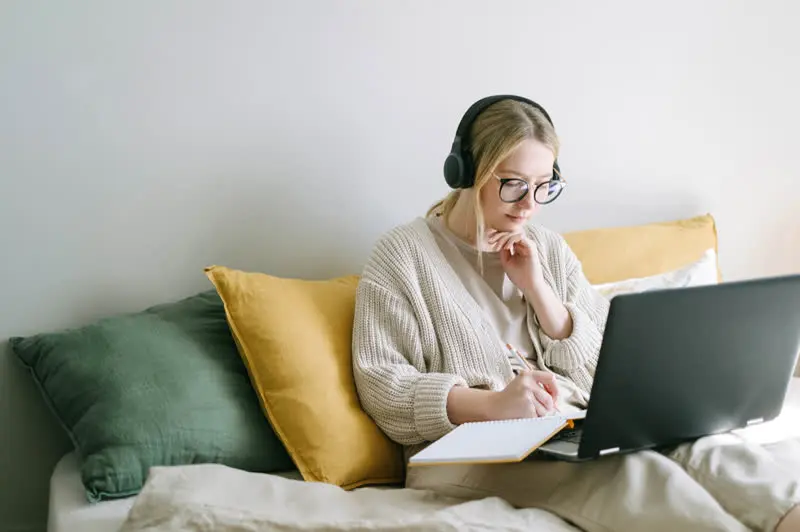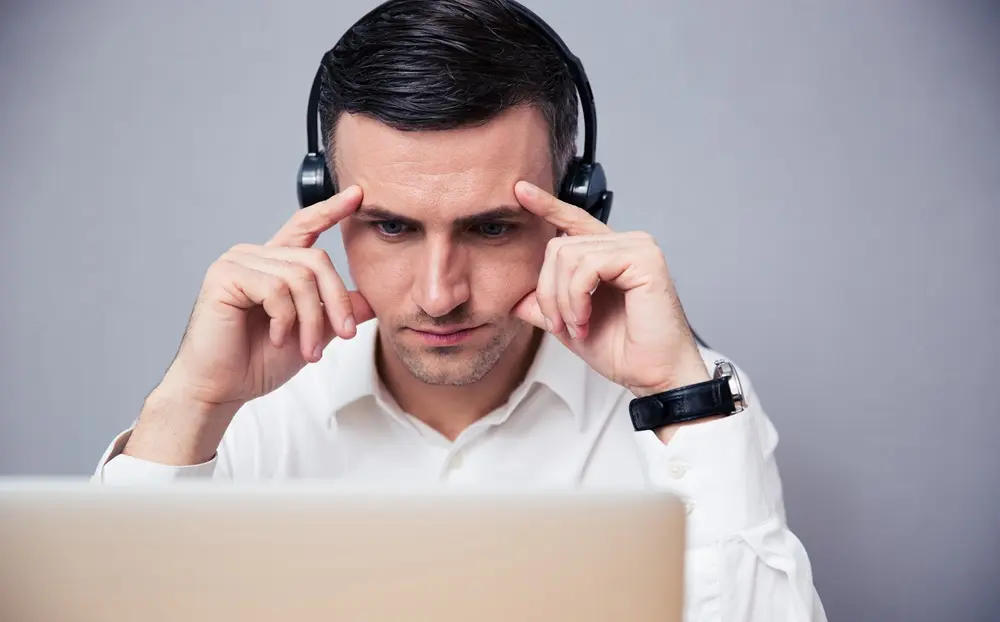If you’re unsure about how to pair your Bluetooth headphones with your laptop, don’t worry. In this guide, we will walk you through the step-by-step process of connecting your Bluetooth headphones to a laptop.
In an era where wires are becoming a thing of the past, Bluetooth headphones have emerged as the epitome of convenience. Whether you’re a music aficionado or a professional in need of uninterrupted audio, these wireless wonders are a must-have.
However, the process of connecting them to your laptop might seem daunting at first. We’re here to simplify it for you.
- Step 1: Ensuring Compatibility
- Step 2: Pairing Your Headphones
- Step 3: Adjusting Audio Settings and Troubleshooting
- Tips for Optimal Usage
- Conclusion
- Addressing Common Pairing Challenges: Actionable Steps for a Quick Fix
- Frequently Asked Questions (FAQs)
- Why won’t my Bluetooth headphones connect to my laptop?
- How can I check if my laptop supports Bluetooth headphones?
- How do I connect two Bluetooth headphones to my laptop?
- How do I connect my Bluetooth headphones to a specific brand laptop (Dell, HP, Lenovo, Sony)?
- How do I connect my Bluetooth headphones to a school laptop or a laptop with a specific operating system (Windows 8, Mac)?
- Conclusion: The Freedom of Wireless Audio Awaits
- Manufacturer-Specific Support
How to Connect Bluetooth Headphones to a Laptop
Step 1: Ensuring Compatibility
Before diving into the pairing process, it’s crucial to ensure that your laptop is equipped with Bluetooth functionality. While most modern laptops come with this feature, it’s always wise to double-check.
- To get started, navigate to the ‘Settings’ menu on your device. Once there, locate the ‘Bluetooth’ option. If you see it listed, that means you’re ready to proceed.
- If not, you will need to purchase a Bluetooth adapter for your laptop.
- It’s worth noting that some laptops may require specific software or drivers to be installed for optimal compatibility with Bluetooth devices. In such cases, visit the manufacturer’s website for any updates or troubleshooting guides.
Note: For Windows 11, find the Start button and click on Settings. Then, go to Bluetooth devices. You may need to enable Bluetooth if it is turned off.
For Mac users, navigate to System Preferences > Bluetooth and make sure that the feature is turned on.
Step 2: Pairing Your Headphones
Once you’ve confirmed that your laptop has Bluetooth capabilities, it’s time to connect your headphones.
To initiate the pairing process, your Bluetooth headphones need to be in ‘discovery’ or ‘pairing’ mode. This mode allows them to be visible to nearby devices. While the exact method may vary depending on the model, it usually involves holding down a specific button or combination of buttons for a few seconds. Consult your headphone’s manual for precise instructions.
- Turn on your Bluetooth headphones and put them into pairing mode.
- On your laptop, go to the settings menu and select “Bluetooth devices.”
- Click on “Add Bluetooth device” and choose the option for adding a Bluetooth device.
- Your laptop will scan for nearby devices, and your headphones should appear on the list. Select them to proceed.
- If prompted, enter a passcode provided by your headphone manufacturer (usually ‘0000’ or ‘1234’).
- Once successfully paired, you should see a confirmation message on your laptop’s screen.
Tips for Connecting Bluetooth Headphones to a Windows 11 Laptop
For users who are operating on a Windows 11 laptop, there are some specific features and updates to be aware of when connecting your Bluetooth headphones.
- Direct Access to Bluetooth settings: In Windows 11, you can access your Bluetooth settings directly from the taskbar. Simply click on the quick settings icon in the bottom right corner of the taskbar and select the Bluetooth icon to turn it on/off. This feature makes enabling and disabling Bluetooth more convenient.
- Swift Pair: Windows 11 offers a feature called Swift Pair which helps simplify the process of pairing Bluetooth devices. When your Bluetooth headphones are in pairing mode and near your laptop, a notification will pop up on your screen. You can select ‘Connect’ to pair the device immediately.
- Audio Settings: Upon successful connection of your Bluetooth headphones, navigate to ‘Sound settings’ under ‘System settings’ to adjust the audio output to your liking. You can also choose to control the volume of your headphones separately from the system volume.
- Troubleshooting: If you encounter any issues during the connection process, Windows 11 has a built-in troubleshooter that can help. Navigate to ‘Settings’, select ‘Troubleshoot’, and then ‘Additional Troubleshooters’. Here, you can select ‘Bluetooth’ to run the troubleshooter.
- Updates: Keep your Windows 11 OS updated. Some connectivity issues might be due to outdated software. Check for updates regularly by going to ‘Settings’ > ‘Windows Update’ > ‘Check for updates’.
Tips for Connecting Bluetooth Headphones to a macOS Laptop
Mac users, here’s what you need to know when connecting your Bluetooth headphones:
- Direct Access to Bluetooth settings: Similar to Windows 11, macOS also allows direct access to Bluetooth settings from the menu bar. Click on the Bluetooth icon in the menu bar and select ‘Turn Bluetooth On’ if it isn’t already.
- Connecting Devices: Navigate to System Preferences > Bluetooth and click on ‘Connect’ next to your headphones’ name once it appears in the list of devices. You may be prompted to enter a PIN or passkey, which can usually be found in your headphone’s manual.
- Audio Settings: Just like on Windows 11, you can adjust audio settings for your headphones under System Preferences > Sound. Here, you can select your headphones as the output device and adjust volume levels.
- Troubleshooting: For any connectivity issues, you can reset your Bluetooth module by holding ‘Option + Shift’ on your keyboard and clicking on the Bluetooth icon in the menu bar. Then, select ‘Reset the Bluetooth module’.
- Updates: As with all devices, make sure to keep your macOS updated. Go to the App Store and select ‘Updates’ to check for any available updates.
Remember, each headphone model may have a slightly different pairing process, so it’s always a good idea to reference the user manual for your specific model. What Are Noise-Canceling Headphones: An In-Depth Guide

Step 3: Adjusting Audio Settings and Troubleshooting
Once the pairing process is complete, it’s time to test your headphones.
- Adjust the volume settings on both your headphones and laptop as needed. You can also adjust other audio settings in your laptop’s control panel or settings menu.
- If you encounter any issues during the connection process, try restarting both your headphones and laptop before attempting to pair again.
- Keep in mind that other nearby devices with Bluetooth capabilities may interfere with the connection. Switch off any such devices or move them away from your laptop.
Tips for Optimal Usage
- Keep a spare set of batteries or ensure that your headphones are fully charged before use.
- To prolong battery life, turn off your headphones when not in use.
- Some laptops have a dedicated button or shortcut for quickly enabling/disabling Bluetooth – familiarize yourself with this feature to save time and effort.
Disclaimer: Please check the user manual or contact customer support for your specific headphone model for detailed instructions on
Addressing Common Pairing Challenges: Actionable Steps for a Quick Fix
Don’t fret if things don’t go as smoothly as you’d hoped in your pairing process. It’s quite normal to encounter a few road bumps along the way. Here are some concrete steps you can take to tackle any issue head-on:
- Restart Your Devices: This is often the simplest and most effective solution. Power off both your laptop and headphones, then power them back on and retry the pairing process.
- Check Your Headphones’ Battery Level: Your headphones may struggle to connect if their battery level is critically low. Ensure they’re adequately charged before proceeding.
- Get Closer: Bluetooth signals can weaken with distance, particularly if there are physical barriers like walls in between. Make sure you’re within a reasonable range (usually about 30 feet) of your laptop when trying to connect.
- Update Your Bluetooth Drivers: Outdated drivers can lead to connection difficulties. Navigate to your laptop manufacturer’s website, locate the latest Bluetooth drivers for your specific model, and download and install them.
- Disable Interfering Devices: Other devices with Bluetooth capabilities can sometimes interfere with the pairing process. Try disabling Bluetooth on any nearby devices and attempt to connect again.
By following these steps, you should be able to overcome most connection issues. Remember, sometimes the solution lies in patience and a bit of trial and error. Keep going, and you’ll be enjoying your wireless audio in no time.

Frequently Asked Questions (FAQs)
Why won’t my Bluetooth headphones connect to my laptop?
There could be several reasons why your Bluetooth headphones won’t connect to your laptop. Here are some troubleshooting steps you can try:
- Restart both your laptop and headphones.
- Make sure the headphones’ battery level is sufficient.
- Ensure the headphones are within reasonable range of your laptop.
- Update your Bluetooth drivers.
- Disable Bluetooth on any interfering devices.
How can I check if my laptop supports Bluetooth headphones?
Navigate to the ‘Settings’ menu on your device, and locate the ‘Bluetooth’ option. If you see it listed, that means your laptop supports Bluetooth headphones. If not, you may need to purchase a Bluetooth adapter for your laptop.
How do I connect two Bluetooth headphones to my laptop?
Connecting two Bluetooth headphones to a single laptop simultaneously might not be possible on all devices. It depends on whether your laptop and operating system supports a feature called ‘multiple output’. If supported, you can pair both headphones as described above, and then select both as output devices in your sound settings. For specific guidelines, refer to your laptop’s manual or manufacturer’s website.
How do I connect my Bluetooth headphones to a specific brand laptop (Dell, HP, Lenovo, Sony)?
The process of connecting Bluetooth headphones to a laptop is generally the same across all brands, including Dell, HP, Lenovo, and Sony. Follow the instructions provided above. However, some specific models may require proprietary software or drivers to enable Bluetooth functionality. In such cases, refer to the manufacturer’s instructions or the user manual that came with your laptop.
How do I connect my Bluetooth headphones to a school laptop or a laptop with a specific operating system (Windows 8, Mac)?
The process of connecting Bluetooth headphones to a school laptop or a laptop running Windows 8 or Mac is similar to the general instructions provided above. However, some school or workplace laptops may have restrictions or additional security measures. If you encounter difficulties, contact your school or workplace IT department for assistance. Likewise, for operating system-specific instructions, refer to the user guide provided with your operating system or visit their official support page.
Conclusion: The Freedom of Wireless Audio Awaits
As we conclude this guide, we hope you’re now equipped with the knowledge to effortlessly connect your Bluetooth headphones to your laptop. The world of wireless audio is vast, and with this newfound skill, you can explore it to the fullest. So, go ahead, immerse yourself in your favorite tunes, and enjoy the freedom that Bluetooth technology offers.
Manufacturer-Specific Support
Different manufacturers may follow unique protocols or include specific features in their Bluetooth headphones. Here are some links to the customer support pages of popular headphone manufacturers where you can find model-specific pairing guides and troubleshooting tips:
Please ensure to refer to these resources or the user manual that accompanies your headphones for any manufacturer-specific instructions.
- How Quantum Computing Could Impact Everyday Laptops
- What Is The Difference Between Lenovo’s Pens? (with Part Numbers)
- How To Wipe A Hard Drive Clean: 4 easy steps
- Maximize Laptop Performance: Mastering Overclocking
- Ultimate Guide to Gaming Laptop Heat Management

J.S. is the owner, content creator, and editor at Upgrades-and-Options.com. I’ve worked in the IT and Computer Support field for over 20 years. The server hardware in my computer labs has mostly been IBM, but I’ve supported Dell, HP, and various other hardware. In addition, as part of my lab administrator responsibilities, I’ve learned, supported, and repaired/upgraded network hardware such as Cisco routers and switches. READ FULL BIO >>


